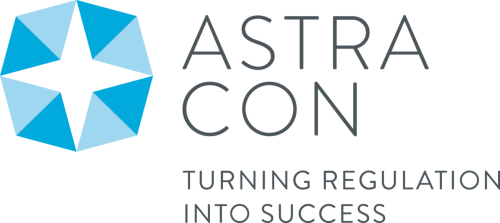Harmonised Standards for IVDR
With the new regulation for in-vitro diagnostic medical devices (IVDR (EU) 2017/746), new standards need to be harmonized by the European Commission. In this post we inform about the most important questions and provide a list of current harmonised standards, published in the Official Journal of the European Union.
Current list of harmonised standards for IVDR (updated March/2024)
| Standard | Version | Amendment | Title |
|---|---|---|---|
| EN ISO 11135 | 2014 | A1:2019 | Sterilization of health care products – Ethylene oxide – Requirements for the development, validation and routine control of a sterilization process for medical devices |
| EN ISO 11137-1 | 2015 | A2:2019 | Sterilization of health care products – Radiation – Part1: Requirements for development, validation and routine control of a sterilization process for medical devices |
| EN ISO 11137-1 | 2015 | A2:2019 | Sterilization of health care products – Radiation – Part1: Requirements for development, validation and routine control of a sterilization process for medical devices |
| EN ISO 11137-1 | 2015 | A2:2019 | Sterilization of health care products – Radiation – Part1: Requirements for development, validation and routine control of a sterilization process for medical devices |
| EN ISO 11607-1 | 2020 | A1:2023 | Packaging for terminally sterilized medical devices – Part 1: Requirements for materials, sterile barrier systems and packaging systems (ISO 11607-1:2019) |
| EN ISO 11607-2 | 2020 | A1:2023 | Packaging for terminally sterilized medical devices – Part 2: Validation requirements for forming, sealing and assembly processes (ISO 11607-2:2019) |
| EN ISO 11737-2 | 2020 | Sterilization of health care products – Microbiological methods – Part 2: Tests of sterility performed in the definition, validation and maintenance of a sterilization process | |
| EN ISO 13408-6 | 2021 | Aseptic processing of health care products – Part 6: Isolator systems | |
| EN ISO 13485 | 2016 | AC:2018 A11:2021 | Medical devices – Quality management systems – Requirements for regulatory purposes |
| EN ISO 14971 | 2019 | A11:2021 | Medical devices – Application of risk management to medical devices |
| EN ISO 15223-1 | 2021 | Medical devices – Symbols to be used with medical device labels, labeling and information to be supplied – Part 1: General requirements | |
| EN ISO 17511 | 2021 | In vitro diagnostic medical devices – Requirements for establishing metrological traceability of values assigned to calibrators, trueness control materials and human samples | |
| EN ISO 25424 | 2019 | A1:2022 | Sterilization of health care products – Low temperature steam and formaldehyde – Requirements for development, validation and routine control of a sterilisation process for medical devices (ISO 25424:2018) |
What is a harmonised standard?
A harmonised standard is a European standard developed by a recognised European Standards Organisation like CEN, CENELEC, or ETSI. It is created following a request from the European Commission to one of these organisations. EN standards, or harmonised standards, are an integral part of CE marking. Manufacturers, other economic operators, or conformity assessment bodies can use harmonised standards to demonstrate that products, services, or processes comply with relevant EU legislation.
The references of harmonised standards must be published in the Official Journal of the European Union.
Do all harmonised standards apply to my device?
No, not all harmonised standards apply to your device. For example if your device is non-sterile, all standards concerning sterilization do not apply to your device.
How do I use harmonised standards?
First, use the list above as a checklist and identify all standards applicable to your device. Be aware, that many different standards and regulations will also apply to your device. And not all standards will be harmonised. You should maintain a list of applicable standards as part of your documentation.
Some standards will completely apply to your company or device, whereas other standards will only partially apply. Some standards will help you directly, while other standards will be used by testing facilities and laboratories that conduct the testing for you.
Secondly, download a GSPR Checklist here and use it to identify all requirements applicable to your device. In order to show compliance with each and every safety and performance requirement, you need to identify the corresponding standard(s). Proof the conformity of your device, for example by testing (some conducted by yourself, other conducted by external testing facilities) and document it in your GSPR checklist.
What is the difference between ISO and EN?
ISO is a standardisation institute and its’ standards are identified with ‘ISO’ and a numeric code, for example ISO 13485. Once the European Commission harmonised a certain standard, it will be identified with ‘EN’ as well, for example EN ISO 13485. Another prefix might be added once a Member State does a translation of the standard, for example DIN EN ISO 13485.
As soon as a standard is harmonised by the European Commission all Member States are obliged to adopt it and withdraw conflicting standards.
Should I use the harmonised standard instead of a newer non-harmonised one?
What is the difference between EN standards, EU directives, and EU regulations?
A Regulation law or legislative act is immediately binding to all EU member states like France, Belgium, Germany or any other European country. The EU member states do not have to ratify the act into their domestic laws.
A Directive is a legislative act setting out overall goals and objectives. In contrast to the Regulation, it is not applicable directly to all European countries. Instead, each EU country needs to adopt the necessary national laws to translate the Directive into domestic laws and ensure its’ realisation.
An EN standard is a way to meet the requirements of Directives and Regulations. You use it to proof that your device meets at least the latest technical state-of-the-art.
